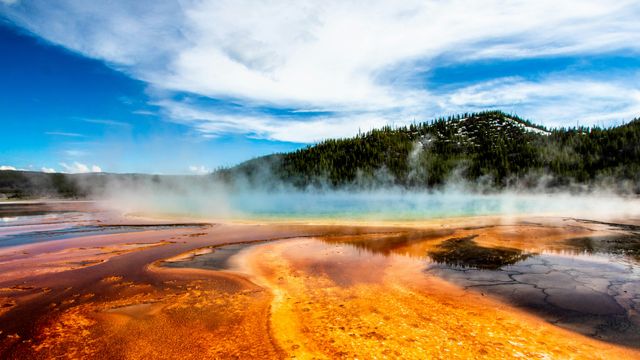
Yellowstone National Park, renowned for its stunning landscapes and geothermal features, has long been a focal point for both tourists and scientists. However, a recent study has revealed that the park’s seismic activity is far more extensive than previously understood. This groundbreaking discovery was made possible through the application of artificial intelligence, offering new insights into the park’s subterranean dynamics.
The study, published on July 18 in the journal Science Advances, involved a collaboration between Western engineering professor Bing Li, researchers from Universidad Industrial de Santander in Colombia, and the United States Geological Survey. By leveraging machine learning, the team reanalyzed historical earthquake data from the Yellowstone caldera, uncovering approximately ten times more seismic events than previously recorded over a 15-year period.
Revolutionizing Seismic Detection
The Yellowstone caldera, a vast depression spanning parts of Wyoming, Idaho, and Montana, is a result of volcanic activity where the land has collapsed following a volcanic eruption. Unlike a volcanic crater formed by explosive activity, a caldera forms when the magma chamber beneath empties, causing the surface to collapse. The new study has expanded the historical earthquake catalogue for Yellowstone to include 86,276 events from 2008 to 2022, vastly enhancing the understanding of the region’s seismic and volcanic systems.
A significant finding from the study is the prevalence of earthquake swarms, which account for more than half of the recorded seismic events. Unlike aftershocks, which follow a major earthquake, swarms consist of numerous small, interconnected quakes occurring in a concentrated area over a short time span. These swarms provide crucial data for understanding the underlying geological processes.
“While Yellowstone and other volcanoes each have unique features, the hope is that these insights can be applied elsewhere,” said Li, an expert in fluid-induced earthquakes and rock mechanics.
Machine Learning: A Game Changer
Before the advent of machine learning, seismic activity was primarily detected through manual inspection by experts, a labor-intensive and costly process. The integration of AI into seismology has initiated a data-mining revolution, allowing researchers to revisit and analyze vast amounts of historical waveform data stored worldwide.
Li emphasized the scalability of AI in seismic detection:
“If we had to do it old school with someone manually clicking through all this data looking for earthquakes, you couldn’t do it. It’s not scalable.”
The study’s findings also indicate that earthquake swarms beneath Yellowstone occur along relatively immature, rough fault structures, contrasting with the more mature faults found in regions like southern California.
Implications and Future Applications
The research team employed fractal-based models to characterize the roughness of these fault structures, a method inspired by geometric shapes that exhibit self-similarity. This approach helps in understanding the complex interactions between slowly moving underground water and sudden fluid bursts that trigger swarms.
Li noted the challenges in comprehending swarm dynamics:
“To a large extent, there is no systematic understanding of how one earthquake triggers another in a swarm. We can only indirectly measure space and time between events.”
However, the enriched seismic catalogue now allows for the application of statistical methods to identify and study new swarms, potentially leading to improved safety measures and informed public awareness about seismic risks.
The implications of this study extend beyond Yellowstone. By enhancing the understanding of seismic patterns, the research could guide geothermal energy development and inform safety protocols in other seismically active regions.
The study, titled “Long-term dynamics of earthquake swarms in the Yellowstone caldera,” marks a significant advancement in the field of seismology, highlighting the transformative potential of AI in understanding Earth’s dynamic processes.







